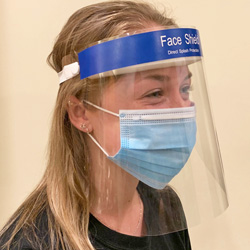Colleagues,
Following up on the explosion at IIT-Bombay which injured a professor and 2 interns:
https://www.hindustantimes.com/mumbai-news/explosion-at-iit-bombay-injures-professor-2-interns/story-i8UkvjMhnKnDeLyjKUj8iM.html
And the dramatic acetylene balloon explosion:
http://www.esdjournal.com/static/Kansas/dauer%20truck.htm
This raises questions about the very common synthetic technique used in research labs of using hydrogen-filled party balloons for small scale reduction reactions at atmospheric pressure. Researchers often fill party balloons with 1-5 liters of hydrogen at a regular gas cylinder, sometimes walk through the lab to their hood, and then connect the balloon to a reaction flask. (All that in contrast with hydrogenation under pressure in a Parr reactor using fixed high pressure lines.)
- Have there been reports of explosions when using hydrogen-filled balloons for lab reduction reactions?
- What safety precautions should be followed when balloons are used?
I can envision a number of things to do to avoid or discharge static electricity, but wonder if others have experience in this.
Thanks,
Craig Merlic
Professor of Chemistry
UCLA Department of Chemistry and Biochemistry
UC Center for Laboratory Safety
Los Angeles, CA 90095-1569
--- For more information about the DCHAS-L e-mail list, contact the Divisional membership chair at membership**At_Symbol_Here**dchas.org Follow us on Twitter **At_Symbol_Here**acsdchas
